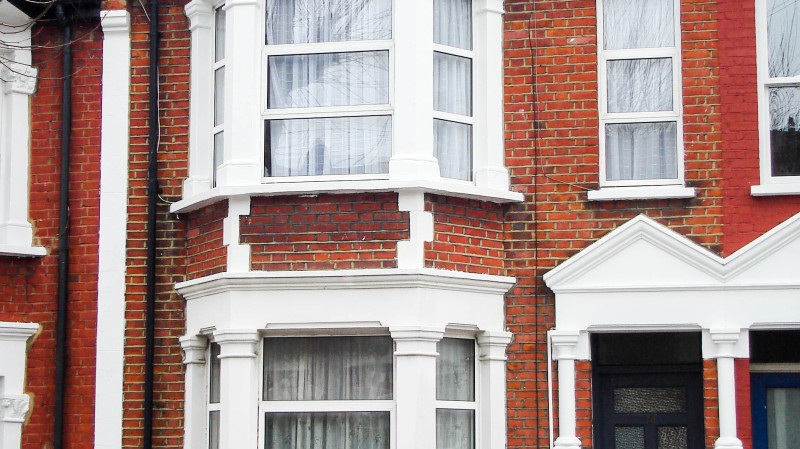You are here: What is the best way to extend a terraced house?
Terraced houses are one of the most common types of property in the UK. Utilitarian in design, Georgian, Victorian and Edwardian terraces can be full of character and steeped in history. However, aspects of their layout can be at odds with modern lifestyles: downstairs bathrooms, small reception rooms, a dark entrance hallway and narrow rooms to name a few.
An extension can allow homeowners to overcome some of these issues and bring their terraced house into line with modern living. But what is the best way to extend a terraced house?

Adding Space and Value
The key to any home extension is to add space to your home and value to the property. It is therefore vital that you investigate the ceiling value of properties in your area, and make sure any project will not cost more than the value it will add. For example, costly basement conversions may be worthwhile in central London where space is at a premium and there is limited scope to extend upwards or outwards, but in other areas of the UK the cost can quickly exceed the value it would add.
In planning an extension to a terraced house, consider what would add the most value. Usually this is something that would overcome one of the obvious drawbacks of terraced houses. Adding an upstairs bathroom or ensuite, for example, or a side extension to create a wide kitchen-diner. However, you must then weigh this up against the cost of the project. Real Homes has an extension cost calculator that can provide a rough idea of the outlay, but extras such as Party Wall surveyors and unforeseen costs must also be factored in.
Speak to a few local estate agents to get an idea of the ceiling price for properties in the area, and do your own research. Websites such as mouseprice.com can tell you how much nearby properties have sold for in recent years.
Permitted Development vs Planning Permission
Another issue to consider is that of planning permission. Many of the extensions outlined below fall under Permitted Development rights, subject to meeting certain criteria. However, it is always worth obtaining a Lawful Development Certificate (LDC) from your local planning office to ensure the extension is not questioned in future (especially when you come to sell your home). LDCs cost around £86.
Specific Permitted Development criteria for different types of extensions are discussed below, however there are some criteria common to all. These are:
- Extensions and additions should not cover more than 50% of the curtilage of the original property (either when it was built, or as it stood on 1st July 1948). This takes into consideration any existing extensions or additions, including outbuildings. Depending on what work has already been done then, you may be limited in any extensions you can add.
- Permitted Development rights do not cover properties in Designated Areas (National Parks, Areas of Outstanding Natural Beauty, Conservation Areas and World Heritage Sites), Listed Buildings, flats, maisonettes or converted buildings, or houses in areas where an Article 4 Direction is in effect. Consult your local planning office if this applies to you.
Party Wall
For side, rear or side/rear extensions that involve a party wall (if it is to be against your neighbour’s property boundary or a wall of their property), and for loft and basement conversions in terraced houses, the Party Wall Act of 1996 applies.
This means you will have to serve Party Wall notices to affected neighbours. The notice must be given in writing, and include: your contact information, details of the work you intend to carry out, access requirements over their land (if necessary) and the proposed start date. The Party Wall notice must be served between two and 12 months before you plan to start the build. Your neighbour can then respond in writing within 14 days if they feel their property will be negatively impacted by the extension. If an agreement is not reached you may have to instruct a Party Wall Surveyor to draw up an agreement, and you will be expected to foot the bill for this.
By far the best course of action is to speak to your neighbours in the first instance. Keeping them informed of your plans is the best way to keep them on side and maintain a good relationship, limiting the chances of requiring extensive (and costly) input from a Party Wall Surveyor.
Rear Extension
Adding an extension to the rear of your terraced house can provide a light, open plan kitchen-diner or living space sorely lacking in terraced houses in their original form.
A rear extension in a terraced house will qualify as Permitted Development, provided:
- A single storey extension does not extend more than 6m into the garden; a two-storey extension does not extend more than 3m into the garden
- The maximum height is 4m
- It is not within 2m of the property boundary
- The extension will not add more than 10% or 50m3 space to the property, (whichever is greater up to a maximum of 115m3).
Side Return Extension
Many homeowners opt to extend into the side return of their terraced house. This is advisable if there is little garden space to eat into. A side return extension in a typical terraced house can widen the narrow kitchen by 1-2m, creating an impressive kitchen-diner.
It is advisable to consider the flow of light through any extension you decide to add in the side return; initially, this space of a terraced property provided light and ventilation to the reception rooms, so blocking this off with an ill-planned extension might obstruct the flow of light and air to the main house. Consider adding rooflights, sliding or bi-fold doors.
Side return extensions often fall under Permitted Development and so do not require planning permission, provided:
- It is single storey
- The maximum height is 4m; if it is within 2m of the property boundary, the maximum eaves height is 3m
- It is no wider than half the width of the original house
- If it is within 2m of the property boundary, the maximum eaves height is 3m.
Real Homes suggests you can expect to pay £1500-£1900 per square metre for a basic side return extension, going up to £1900-£2200 per square metre for one with a good quality finish and £2200-£2400 per square metre for an excellent quality finish.
Side/Rear Extension
Another option is to extend into the side and rear at the same time. With clever use of glazing such as clerestory windows or rooflights, or bi-fold or French doors, the increased flow of light through a once dark and narrow terraced house can be incredible.
Loft Conversion
A loft conversion can add an extra bedroom and ensuite to your terraced house, or perhaps a large study or games room. Whatever its intended use, a loft conversion will no doubt add value and space to a terraced house.
Terraced houses lend themselves to loft conversions: with structural Party Walls on both sides, the loft space can generally be opened up with minimal additional support or restructuring needed. What is more, the steep pitched roofs of houses built pre-1960s means you can achieve an end result that has plentiful headroom with minimal work.
There are some important points to consider when planning a loft conversion in your terraced house. Firstly, to meet Building Regulations you will need to ensure there is a suitable ‘escape route’ to the garden or street, so the positioning of a new staircase will be crucial. Perhaps most importantly, you need to consider whether your loft conversion project requires planning permission.
Most loft conversions in terraced houses will qualify as Permitted Development, provided:
- it will not add more than 40m3 to the property;
- it cannot exceed the existing height of the house
- it must use materials that are aesthetically similar to the existing house
- on the principal elevation, it cannot protrude beyond the existing roof’s slope
- there are no verandas, balconies or raised platforms (Juliet Balconies are usually OK)
- side-facing windows, if included, must be obscure-glazed and at least 1.7m above the ground
- it must not overhang the original wall of the house.
Real Homes suggests loft conversions generally cost between £30,000 and £50,000, with type of conversion and size being the key determiners. A simple Velux loft conversion with skylights is estimated to cost around £1,150-£1,350 per square metre; this includes the cost of reinforcing the floor, insulation, a staircase, electrics, lighting, heating and fire safety features. Including these fundamental aspects of the basic loft conversion, a dormer loft conversion is around £1,250-£1,450 per square metre; this style of loft an provide one or two rooms. At the luxury end of the scale, a Mansard loft conversion will set you back between £1,500-£2,500 per square metre.
Adding a room to your home should increase its value by upwards of £50,000. Therefore, anyone adding a loft conversion costing between £30,000-£50,000 appears to be assured of a good return. However, research the ceiling prices of properties in your area to ensure you aren’t likely to be left out of pocket, regardless of how beautiful the loft conversion is.
Basement
Basement conversions are usually the most expensive option when it comes to extending a terraced house: Simply Basement estimates the average basement conversion in areas where space is at a premium (London and other major cities) costs around £140,000.
If a terraced house has an existing basement or cellar, and the ceiling prices of properties in the area would not prevent you getting a good return on the cost of conversion, it might be worth considering. In locations where space is not a premium, however, retrofitting one is unlikely to be cost-effective in terms of the value added to the property.
If you are looking to make some home improvements, you may find some of these services useful
Building Regulations
Find details of local experts who can help with Building Regulations
Builders
Find local help with a building project
Architectural Design Services
Find local Architectural Design experts
Structural Inspections
Find an expert to carry out a structural inspection
Building Surveys
I want a local surveyor to do a Building Survey for me
Choose which Architectural service you require
If you are not sure which service you require, check out the options available...


